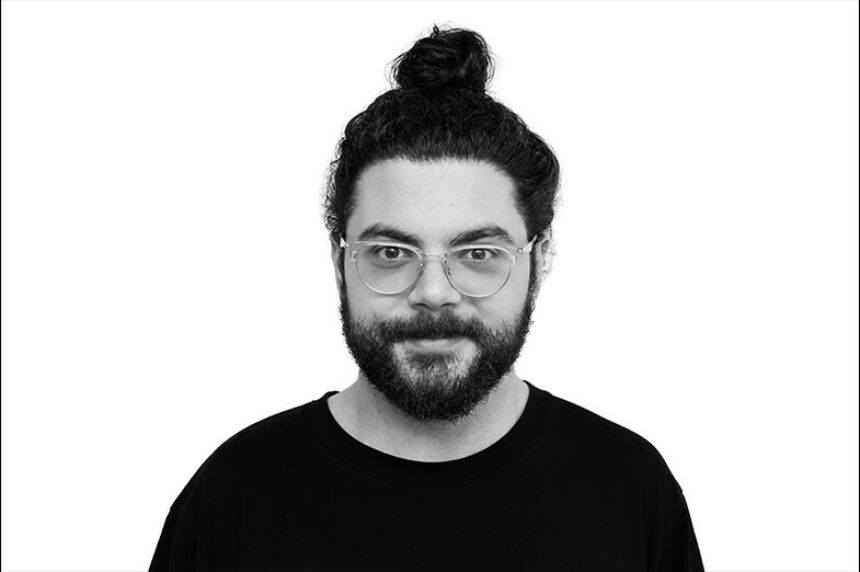August 18, 2020
Architecture graduate student recognized with computational design award

UNIVERSITY PARK, Pa. — Özgüç Çapunaman, a doctoral candidate in the Stuckeman School’s Department of Architecture, has been recognized for his research by the Association for Computer-Aided Architectural Design Research in Asia (CAADRIA) as the recipient of the Young CAADRIA Award. His research centers on interactive digital fabrication, programmable composites, computational making and architectural tool development.
Prior to attending Penn State, Çapunaman earned a bachelor’s degree in industrial design with high honors from Istanbul Bilgi University and a master’s degree in computation design from Carnegie Mellon University. His master’s thesis was titled “CAM as a Tool for Creative Expression: Informing Digital Fabrication through Human Interaction” explores human agency in digital design-fabrication workflows.”
Selection of the Young CAADRIA Award recipient is based on the merit of a full research paper, research contribution and relevance to CAADRIA with demonstrated depth of research interest by a committee consisting of people from CAADRIA, the Paper Selection Committee and the conference host. According to Çapunaman, many important individuals in the field of computational design have been given the award in the past years, which made it a desirable goal for him to reach.
“Interactive digital fabrication within the design computing field is an up-and-coming area of interest for researchers,” he said. “Being awarded the Young CAADRIA Award hopefully means more attention can be brought towards this subject. Personally, being recognized in this way is very encouraging as I begin my Ph.D. efforts here at Penn State.”
Çapunaman’s paper submission focuses on interactive digital fabrication workflow. His research, which he began to establish during his time at Carnegie Mellon University, aims to question the human relationship with digital fabrication tools that are used in the field, such as CAM and CAD.
“The paper presents an interactive and adaptive design-fabrication workflow where the user can actively take turns in the fabrication process,” Çapunaman wrote in his abstract. “The proposed experimental setup utilizes paste extrusion additive manufacturing in tandem with real-time control of an industrial robotic arm. By incorporating a computer-vision based feedback loop, it captures momentary changes in the fabricated artifact introduced by the users to inform the digital representation.”
According to Çapunaman, the tools that designers may currently use are important in pinpointing the design space they navigate. He believes that these tools are not being questioned enough and that digital practitioners should be paying more attention to the means of expression with which they work.
“What makes Özgüç stand out is his directness, openness and critical approach to solving problems. He thinks outside the box." — Benay Gürsoy ToykoçBenay Gürsoy Toykoç, assistant professor of architecture at Penn State who is also a previous Young CAADRIA Award recipient herself, encouraged Çapunaman to apply for the honor. Gürsoy Toykoç was one of Çapunaman’s instructors during his undergraduate studies at Istanbul Bilgi University and she currently leads the Form and Matter — or ForMat — Lab in the Stuckeman Center for Design Computing where the graduate student is a researcher. According to her, the paper Çapunaman submitted presented an original challenging approach to robotic fabrication in design fields. “Without any hesitation, I can say Özgüç was one of the best undergraduate students I’ve ever had the chance to work with; he’s always pushed the boundaries,” she said. “As a Ph.D. student, he is again very ambitious, self-sufficient and eager to learn and explore. He likes challenges and does not feel comfortable in his comfort zone.” Gürsoy Toykoç explained that from the very first class she taught with Çapunaman as a student, she could tell that he would be particularly successful. She always enjoyed their intellectual conversations, which she felt always kept her perspective on things fresh. “What makes Özgüç stand out [as a student and researcher] is his directness, openness and critical approach to solving problems. He thinks outside the box,” she said. “He communicates himself very well in both written and spoken conversation and I think one of the reasons he was given this award is his ability to clearly communicate complex ideas.”
